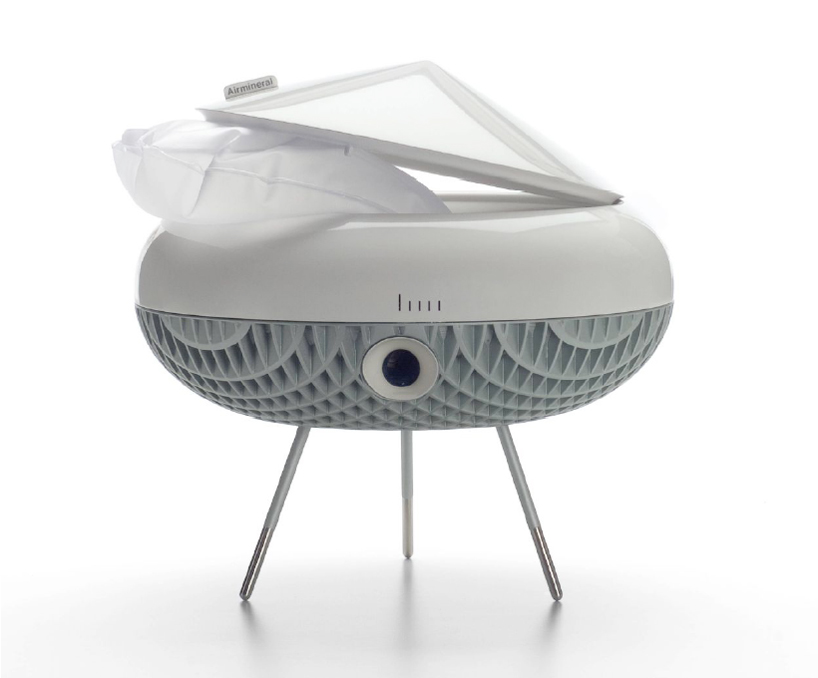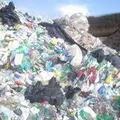mathieu lehanneur: the island air purifier for airmineral
by: Designboom - Weblog, 2011-11-03 18:04:00 UTC

the air purifier sprays micro filtered sea water into the atmosphere, making the benefits of the marine climate transportable.
read more
5.5 designers: karpett for tarkett
by: Designboom - Weblog, 2011-11-04 12:08:00 UTC

the easily retractable ground covering is both a versatile
and comfortable resting implement.
read more
ayala serfaty: in vein
by: Designboom - Weblog, 2011-11-04 12:39:00 UTC

in her latest collection of work, the designer has researched the process of hand-made felt and its application to contemporary furniture, whereby she moulds silk, linen and wools together to create seamless upholstered surfaces.
read more
Outback Cooler concept: A sustainable solar refrigerator that doesn't require electricity!
by: Ecofriend, 2011-11-05 21:34:51 UTC
Dattatreya Mandal:

Outback CoolerSolar powered food cooler for campers in remote areas
Whenever we think of green technology, most of us always look forth to the production (and usage) of clean electricity from renewable sources of energy. Though power as a component is very important for running our gadgets and every day appliances, sustainability does not always equate to this magnitude of power. As a matter of fact, it involves a much greater scope, which in itself is comprised of multiple facets all related to the achievement of the same end - that is energy efficiency. In relation to this, Dutch industrial designer Jo Szczepanska has contrived the Outback Cooler concept. It is basically a food cooler which utilizes the effect of passive solar power for its intrinsic mechanism (thus, not requiring any electrical system).
Envisaged as a hassle free, user friendly food cooler, the adroit system will mainly cater to the outdoor campers and hikers across the harsh environments of the Australian desert. According to the designer, the mechanism of this outdoor contraption utilizes natural evaporation for the main effect of cooling. This naturalistic system is based upon the much touted pot-in-pot refrigerator mechanism, which in itself requires zero electricity usage.
Picture Gallery
Solar powered food cooler for campers in remote areas
Better known as Zeer (in Arabic), the rudimentary form of this ‘pot-in-pot’ mechanism was used in way back in antiquity, in the Egyptian Old Kingdom (circa 2500 BC). Finally, Sudanese lecturer Mohammed Bah Abba re-discovered it in its modernistic iteration, and made it available on a large scale to the public.
The basic set up of the system involves a clay pot within a larger clay pot (as the name suggests). A layer of wet sand is kept between the two pots, while a wet cloth cap (with straps, as in the case of Outback Cooler) covers the dual pot container. The mechanism involves the passive heating of this container by the incoming solar energy (in form of sun rays). Due to this solar energy, the inner pot (with the food containers) gets heated, and thus the process of evaporation occurs. With evaporation, the hot air from these containers is given to the surrounding wet sand layer, while cold air (or at least cool air) from the sand enters (cycled) into the inner pot, to fill up the vacuum. Thus, the inner vessel with the food is kept cool by natural evaporation.
As for functionality, even ocean water can be used for wetting the sand layer. The food can be kept from being contaminated by using a glazed surface on the inner wall of the food containers. But the predicament can lie with humid weather conditions. In such a climate, the scope for natural evaporation becomes much lesser, and hence the Outback Cooler may perform poorly.
Coming back to the core practicality of Outback Cooler, the device is both portable and easy to use. According to the designer, in a dry weather, the simplistic technology allows for food to be stored for up to 20 days without use of any external power sources. Moreover in a way, such concepts prove that ‘green’ technology isn’t always about some highfalutin mechanism. Sometimes ‘back to basics’ approach can also do sustainable wonders.
Source: JoSzczepanska


 Salt-driven air conditioner looks to slash energy
Salt-driven air conditioner looks to slash energy
by: Gizmodo , 2011-11-05 12:00:00 UTC
Startup 7AC Technologies plans to beta test an air conditioner which uses plastic plates and a high-tech membrane to draw water from the air and cut energy use by 50 percent and more.
Apple Patent Details More Efficient OLED Display
by: Gadget Lab, 2011-11-03 22:03:07 UTC

The battle between component performance and battery drain is hotter than ever. We want ever more powerful processors and bigger, brighter displays, but these components run on batteries, after all, and draw increasing amounts of power. It’s an escalating problem, but an Apple patent revealed today shows one way Apple could provide relief.
Using a hybrid OLED display, Apple could get power savings of up to 30 percent in future iPhones and iPads. Such an OLED-based display would also allow Apple to make an ultra-thin iDevice.
These power-saving possibilities come at a time when battery life issues are at the forefront of many iOS 5 and iPhone 4S users’ minds.
In today’s patent reveal, we see an iPhone display that would include an “opacity switching layer” sandwiched between a transparent OLED layer and a solid background layer (like a reflective white sheet). When no current is running through the switching layer, black would be displayed. The layer could be switched to be transparent or semi-transparent to reveal white beneath.
With an LCD display, like those in current iPhones and iPads, backlighting is always on when the screen is in use. Thus, it’s always draining a little bit of power. But OLED displays (like Samsung’s Super AMOLED Plus) work differently.
OLEDs operate at a lower voltage than comparable LCDs and only use power when pixels are turned on — two factors that translate into battery-power savings. With current OLED technology, however, power can be quickly gobbled up in applications that display a lot of white space, such as in word processor, email and e-reader apps. You know, because of all those turned-on, white-displaying pixels. This can make OLED an inefficient choice in some situations.
But because the two technologies function so differently, directly comparing OLED power consumption with LCD power consumption is “like comparing apples to oranges,” DisplaySearch’s Jennifer Colegrove says. This makes it difficult to tell which method is really the most efficient overall.
Apple’s OLED display would work differently, though, minimizing the instances when OLED pixels need to be brightly fired up.
One other quirky benefit of a possible Apple OLED display: It could enable the Apple logo on the back of a device to be illuminated — much like this clever hack, but even when the OLED is powered off.
Display tech seems to be a hot area for Apple’s R&D teams. A previous Apple patent detailed a hybrid LCD and electronic paper display that would also help conserve your smartphone’s precious battery life (e-ink is a very low-power technology). Another patent showed how Apple could keep future displays smudge and fingerprint-free using an oleophobic coating.
via Patently Apple
Sharp Claims 36.9% Conversion Efficiency for Triple-junction PV Cell
by: Tech-On! : tech news - straight from Asia., 2011-11-05 23:36:00 UTC
Sharp Corp announced Nov 4, 2011, that the cell conversion efficiency of its compound semiconductor triple-junction photovoltaic (PV) cell reached 36.9%.
Ecology group urges water monitoring on EU imports (News)
by: Euractive, 2011-11-03 07:22:35 UTC
Europe’s demand for energy, fuels and food are placing a global strain on water and other natural resources that could have particularly devastating consequences for developing nations, warns a report published today (3 November) by a conservation organisation.
More »
Environmental contaminants revealed by new thousand-color sensor
by: Gizmag Emerging Technology Magazine, 2011-11-04 23:15:49 UTC

When any two compounds are combined, the resulting chemical reaction shows up as a specific color when natural sunlight reflects off the area where that reaction is occurring. Therefore, by assessing the colors of an object, material or environment, it is possible to determine what compounds are present within it. Unfortunately, many of those colors fall outside the mere three bands of light (red, green and blue) visible to the human eye. Spectral analysis equipment
can detect a much wider range of light, but it is typically located in labs, which samples must be transported to. Now, however, a scientist from Israel’s Tel Aviv University (TAU) has created a portable hyperspectral sensor, that can “see” over 1,000 colors – this means that it could be used to detect pollutants in the environment, on location and in real time.
..
Continue Reading
Environmental contaminants revealed by new thousand-color sensorSection: ecoGizmoTags: Environment,
light sensor,
Pollution,
Tel Aviv University
Related Articles:


 Eco Rider
Eco Rider
by: VEIL - Victorian Eco Innovation Lab, 2011-11-01 05:53:19 UTC
| Eco Rider: multi-functional, human powered, street sweeper & lawn mower. |
 |
Read more...


Comments by our Users
Be the first to write a comment for this item.